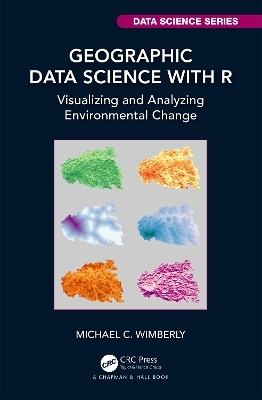
Geographic Data Science with R
Chapman & Hall/CRC (Verlag)
978-1-032-34771-4 (ISBN)
The burgeoning field of data science has provided a wealth of techniques for analysing large and complex geospatial datasets, including descriptive, explanatory, and predictive analytics. However, applying these methods is just one part of the overall process of geographic data science. Other critical steps include screening for suspect data values, handling missing data, harmonizing data from multiple sources, summarizing the data, and visualizing data and analysis results. Although there are many books available on statistical and machine learning methods, few encompass the broader topic of scientific workflows for geospatial data processing and analysis.
The purpose of Geographic Data Science with R is to fill this gap by providing a series of tutorials aimed at teaching good practices for using geospatial data to address problems in environmental geography. It is based on the R language and environment, which currently provides the best option for working with diverse spatial and non-spatial data in a single platform. Fundamental techniques for processing and visualizing tabular, vector, and raster data are introduced through a series of practical examples followed by case studies that combine multiple types of data to address more complex problems.
The book will have a broad audience. Both students and professionals can use it as a workbook to learn high-level techniques for geospatial data processing and analysis with R. It is also suitable as a textbook. Although not intended to provide a comprehensive introduction to R, it is designed to be accessible to readers who have at least some knowledge of coding but little to no experience with R.
Key Features:
Focus on developing practical workflows for processing and integrating multiple sources of geospatial data in R
Example-based approach that teaches R programming and data science concepts through real-world applications related to climate, land cover and land use, and natural hazards.
Consistent use of tidyverse packages for tabular data manipulation and visualization.
Strong focus on analysing continuous and categorical raster datasets using the new terra package
Organized so that each chapter builds on the topics and techniques covered in the preceding chapters
Can be used for self-study or as the textbook for a geospatial science course.
Dr. Michael Wimberly is a Professor in the Department of Geography and Environmental Sustainability at the University of Oklahoma. He previously served on the faculties of the University of Georgia and South Dakota State University. He holds a Ph.D. from Oregon State University, an M.S. from the University of Washington, and a B.A. from the University of Virginia. Dr. Wimberly has taught graduate and undergraduate courses in Geographic Information Science (GIS), Spatial Statistics, and Landscape Ecology. He has worked with the R language and software environment throughout his academic career after being introduced to its predecessors, S and S+, in graduate school. His research combines ecological models with data from Earth-observing satellites to address scientific questions and create practical applications in the fields of public health and natural resource management. Areas of study include the effects of land use and climate on vector-borne disease transmission, wildfire and vegetation dynamics in temperate and tropical forest ecosystems, and the causes and consequences of agricultural expansion into native forests and grasslands.
1. Introduction to R 2. Graphics with ggplot2 3. Processing Tabular Data 4. Dates in R 5. Vector Geospatial Data 6. Raster Geospatial Data - Continuous 7. Raster Geospatial Data - Discrete 8. Coordinate Reference Systems 9. Combining Vector Data with Continuous Raster Data 10. Combining Vector Data with Discrete Raster Data 11. Application - Wildfire Severity Analysis 12. Species Distribution Modeling Appendix
| Erscheinungsdatum | 20.04.2023 |
|---|---|
| Reihe/Serie | Chapman & Hall/CRC Data Science Series |
| Zusatzinfo | 4 Tables, black and white; 56 Line drawings, color; 46 Line drawings, black and white; 22 Halftones, color; 1 Halftones, black and white; 78 Illustrations, color; 47 Illustrations, black and white |
| Sprache | englisch |
| Maße | 156 x 234 mm |
| Gewicht | 675 g |
| Themenwelt | Mathematik / Informatik ► Mathematik |
| Naturwissenschaften ► Geowissenschaften ► Geologie | |
| ISBN-10 | 1-032-34771-6 / 1032347716 |
| ISBN-13 | 978-1-032-34771-4 / 9781032347714 |
| Zustand | Neuware |
| Informationen gemäß Produktsicherheitsverordnung (GPSR) | |
| Haben Sie eine Frage zum Produkt? |
aus dem Bereich


